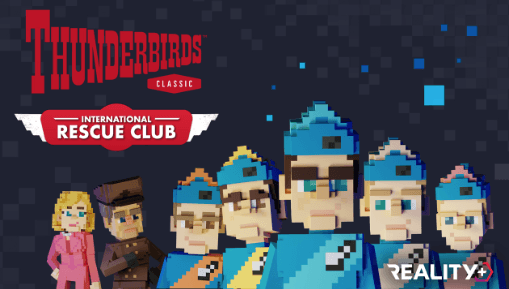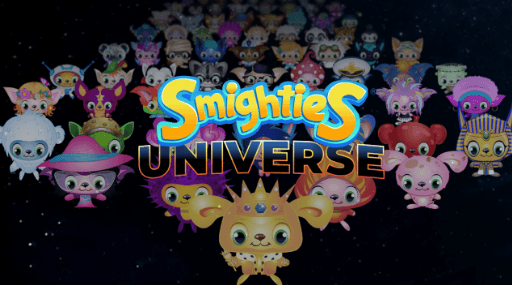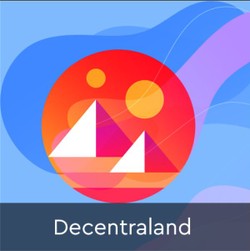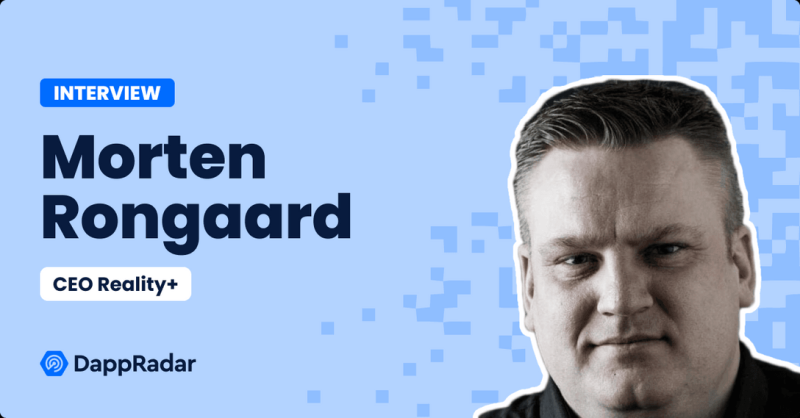Contents
Metaverse branding should be taught in schools right now.
DappRadar kickstarts a new series of interviews with industry influencers where we dive deeper into web3 topics like NFTs, gaming, and the metaverse through the eyes of branding, marketing, and art professionals.
We have witnessed the downturn in crypto due to the bear market. Hacking incidents like the Ronin bridge heist affecting Axie Infinity, and recent pushback from other significant players such as the Microsoft-owned development studio behind Minecraft, Mojang, banning NFTs from its game.
Nonetheless, despite the hackings, scams, and negative press that cryptos get during these difficult times, there is still a positive sentiment regarding cryptocurrencies and NFTs. A recent poll by Mastercard shows that 47% of the 35,000 participants expressed positive opinions about NFTs and the crypto industry. Also, the forecast for total investments for this year has been increased to 12 billion, up by 20% since last quarter leaving other categories in the dust.
According to data by DappRadar, blockchain games defy the bear market, with $300M raised in funding and more than 1 million daily Unique Active Wallets. DappRadar is your one-stop shop for all decentralized apps where you can explore your favorite blockchain games and NFTs.
How can brands use NFTs and gamification to build web3 economies?
I spoke with Reality+ CEO Morten Rongaard to answer this. Reality+ is an industry pioneer with a strong presence in the web3 industry and a preferred partner in The Sandbox, the world’s largest Metaverse, hosting big names like Adidas, and celebs like Snoop Dog, Steve Aoki, and many more.
Tell us about yourself and Reality+
I help leading brands move from web 2.0 into web 3.0 and become their brand guardian. As the CEO of Reality+, we help the biggest brands venture into web3 by developing games and exciting NFT projects for them in the metaverse.
Our team has a lot of combined experience, and we are true trailblazers in this space. When we first started, the word NFT did not exist, but people referred to them as digital collectibles In the gaming industry.

How did your partnership with BBC for the game Dr. Who Worlds Apart start?
We saw the potential behind tying a popular show like Doctor Who – Worlds Apart with gaming. Our main focus was to create a fun game for Dr. Who fans, so we approached BBC, developed the concept for eight months, and added the blockchain elements to it. It was a very demanding process to land the deal, and it took all of our resources to ensure that we would deliver the best possible game.
Also, we had to tick all the right boxes regarding due diligence, having our own technology, and the sustainability aspects in place. However, I was very impressed with BBC’s openness around embracing web3. They understand that web2 is exhausted and were really excited about creating something completely new.
What can you tell us about the current status and roadmap?
Doctor Who – Worlds Apart is a massive game, and we want to ensure we have the best quality. This means that we have added many new resources to the team. We are talking about studio directors, producers, game designers, and developers.
Our Founder´s Token Holders played an early access version of the game and gave us amazing feedback to understand what we need to change. I am sure many developers can relate that some ideas only look good on paper!
Soon, we will have a closed beta for 50.000 people able to play it, adding 60 cards where you can play with different digital archetypes. You dont need to buy any NFTs before you play it because we want to stand out from what many others are doing.
We are a free-to-play game; if you want to have some cool traits to your cards, you can have that option. We focus on fun and entertainment, not earning money. We had been selling the card packs simultaneously as making the game. For us, it is easier to focus on building a great game that retains people. We are in a very competitive market, so we see this as the best approach.
Are fans still hungry for cards and new skins during this bear market?
We have not released more packs in a long time. It could feel like a cash grab if you keep adding more packs, and you want to avoid giving that impression. The market has generally slowed down, but our marketplace is thriving. We see roughly USD 800.000 in volume. I take it as proof that we have created a successful concept.
We see daily trades from 50cents up to hundreds of dollars. We created a game that needs to be fun, and five years down the road. We should still be able to enter it and be able to buy the original packs.
What have you and your team learned after dropping so many card skins?
Looking back in time, I have learned that we should have waited with some of the packs. The problem is when you work with AAA brands, a lot of this gets scheduled 3-6 months in advance and makes it very difficult to change anything. On the other end, we see another kind of interest from different users.
What type of users do you see within your community?
We could spot right away that our community was a mix of 3 groups. On the one hand, there are simply Dr. Who fans; on the other, Dr. Who fans who are also web3 savvy and lastly, speculators.
I am very proud of our community because they have the web3 mentality where they try to educate each other, the web3 experts help those who have no idea about it, and vice versa. Dr. Who fans educate web3 experts about the show, which is very important for the game.
I couldn’t ask for a better community. I was really afraid of only attracting speculators, which is why we emphasize making a concept that fully embraces everyone, especially those who just want a cool game. If you are active in the game, you will have other benefits that speculators will not have.
For example, different kinds of experiences. New kinds of NFTs and resources because we value people who give us feedback while also having an active marketplace. This is where we have a huge advantage compared to other projects and what we do to keep them engaged with our product.
What are the first steps for brands to enter the world of NFTs and metaverse?
First of all, brands need to educate themselves. They must understand what the metaverse is and why NFTs matter. I think this is crucial because those who don´t pay attention to this will become obsolete in time.
If web2 requires social media strategy, you need the same thing right now for web3, which adds new dimensions. Brands must also go beyond this and truly understand their product offering, ask the following questions:
- Do we even need web3?
- How will web3 work and interact with our users in the future?
- How can we integrate web3 functionalities into a communication strategy for web2?
The truth is that most brands are not prepared to go full on web3, so the real focus should be on finding a middle ground or hybrid, taking into account centralized and decentralized approaches. I call this middle-ground web 2.5, and it is a necessary educational journey that they must embark upon.

What are the typical misconceptions of NFTs and the Metaverse?
There are many misconceptions right now about NFTs and the Metaverse, but I want to focus on two that I keep hearing all the time:
- “NFTs are bad for the environment.”
- “There is only one metaverse.”
NFTs are not bad for the environment per sé. Proof Of Work blockchain mining methods are more impactful to the environment than Proof Of Stake, but overall, NFTs represent a very small portion of Ethereum transactions.
Also, you can use the technology to offset your carbon footprint. Environmental sustainability is a core value for us, which is why we partnered with ReFeed, a modular multi-step process extracting 100% utility from unused food and food waste.
Companies can invest in this initiative by purchasing eNFTs that will transparently increase their ESG sustainability scores using our customized blockchain system. The blockchain gives us all the possibilities for a decentralized approach to things, and NFTs are just assets. We need to educate people to understand what they can do with this type of asset.
This sets us apart from the competition. Nobody else is doing this. Our chain is carbon neutral and minting an nft in our game is measurable. This is how we could do sustainable diligence with BBC.
Finally, the metaverse is just not one place that a centralized entity will rule. Instead, it is about multiple virtual worlds, and people need to understand that interoperability is a key aspect here. Different NFTs will give access to various metaverses so that they will play a larger role.
What mistakes must brands avoid at all costs?
They can’t just launch an NFT collection and hope for it to be successful or believe they automatically need to have a web3 strategy. First, they must understand their market. They need a platform, gamification, tokenomics, and people to use the product.
A common mistake I see is they want to save money but still somehow ride the hype around web3. But they get it wrong. They should take a step back and ask themselves if it’s the right thing to do for them in the long run.
Another useful question brands should ask themselves is whether they have enough resources. How do they keep their users engaged? They will need to build a sustainable community.
How do you convince a big brand to step into the metaverse and embrace NFTs?
We are not only trailblazers in this space, but we have real use cases and revenue-generating projects. We have important partnerships in place, and once you start working with big brands, all of these components matter. They know that we have done it before, and we know very well what we are doing.
Why is the metaverse not just hype?
The lines between the physical and the digital are getting more blurred than ever, especially after Covid. The fact that anybody in the metaverse can be whatever or whoever they want is really powerful.
I believe that the metaverse is in real demand because more and more people are looking for a place where they can express themselves, escape the negativity that surrounds them and interact with others in completely new ways. It is definitely not hype, and it goes beyond e-commerce.
The metaverse enables new ways of socializing, which is why we see a lot more focus on mental health issues, especially after the pandemic. There needs to be a discussion around mental health issues and how we can interact in the metaverse constructively. We also need regulations that benefit users clarifying the playfield between the physical and the digital world.
What is the best blockchain to build on?
We are chain-agnostic as a platform. We do not want to focus on one specific platform, but I am a huge fan of Ethereum, personally. Hedera is also wonderful, and I really like what they are doing Polygon is also impressive. However, what will happen to Layer 2 solutions once Ethereum Transitions to proof of stake? We don´t know, and this is why we are chain agnostic.
I might be wrong here, but I am afraid we will see many networks disappear, so I remain very curious about the future on this front.
How do you choose which brands to work with?
Reality+ offers bespoke services to every brand that we work with. We don’t just develop an external product and marketing strategy. We also work with our partners to educate and inform a change in mindset that helps them to understand and grow in the space.
To ensure we can provide this level of care and attention to our partners, we only select and partner with a few brands each year.

What sort of NFTs do brands often want and why?
Well, It started with a Bored Ape kind of approach. Jpeg, profile pictures, but this is changing. Brands are increasingly getting more interested in the utility behind their NFTs. What is the end goal? More user engagement? I see a governance NFT approach with future utility tied to it.
Brands often wonder, how can they give an asset that gives value to their fans and interact with them in a new way? There is still a market for generative art, but I see things are moving rapidly, especially when it comes to fan engagement.
It is not just revenue right now. What is more, how can I innovatively make new user acquisitions? NFTs are, in my opinion, the ultimate user acquisition tool.
For example, we are working with a toy company called Toikido. They sell physical NFT collectibles in their stores, bringing the world of physical toys and NFTs together for the first time. The collection is called Smighties, and fans will be excited to own both a plush version of their favorite characters and a rare Smighties Universe digital collectible NFT.
This is smart, especially in web3 and gaming, where it can be very expensive to target users, and this is definitely a more long-term strategy.
Where do you see the future of the metaverse, and how do brands fit into it?
Brands need to have different kinds of placements as there won’t be just one metaverse catering to all brands. They will need to have full control of their strategy and know where the transactions take place and where the users are.
Now, more than ever, when it comes to the metaverse, brands need to understand their consumers by studying the concepts inside the metaverse and how users behave there. We should be teaching this in schools right now.
We must answer fundamental questions like how we can enhance people´s social skills with the metaverse and make them more familiar with these platforms. Finally we need some regulatory framework to protect users and determine the extent of our actions in the metaverse.
My main concern is to end up with a landscape where all these things are not defined with a web3 mindset. The future of the metaverse needs us to have this open discussion on how we can have a healthy approach to embrace this innovation and monitor how people are getting by from a mental health aspect.




